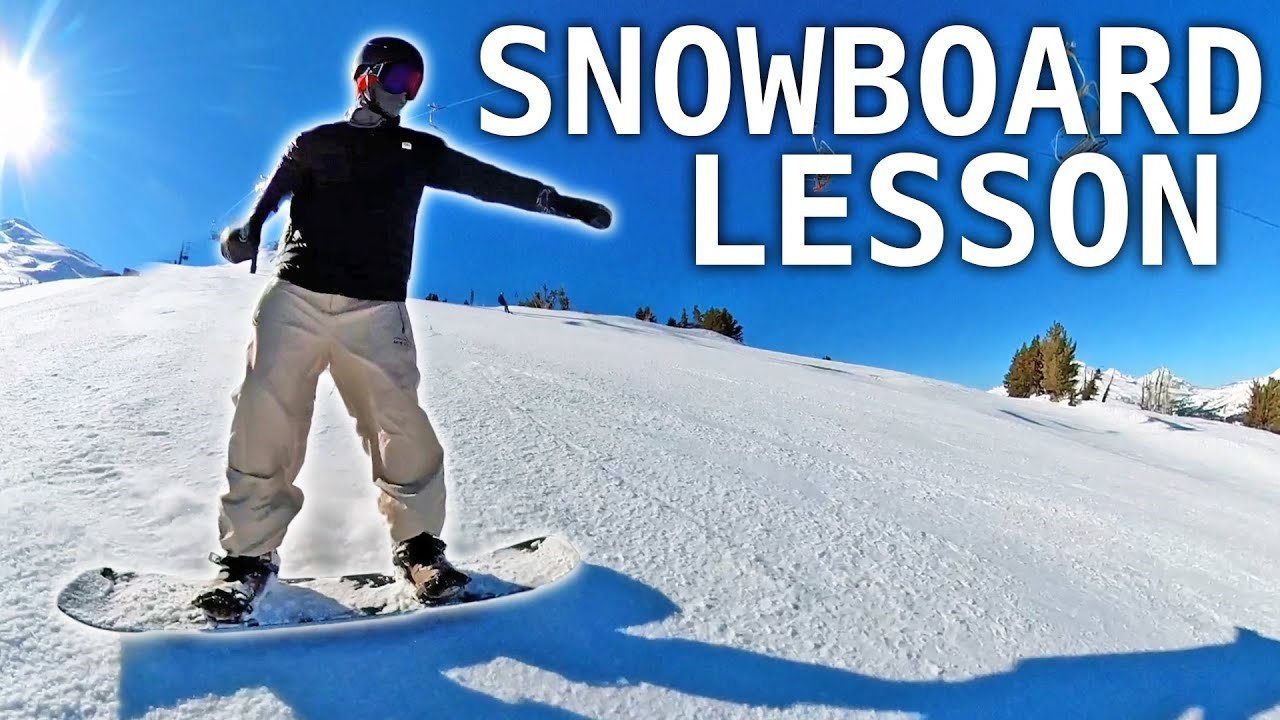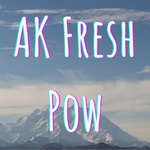
Beginner Snowboard Lesson – How To Heel Slide
In this video, Kevin from SnowboardProCamp shares some valuable advice on how to master the heel slide, which is an essential skill for beginner snowboarders. Heel sliding teaches you how to control your speed, stop, and navigate from side to side on your snowboard. Kevin advises starting off in an easy beginner area where you can practice your sliding without picking up too much speed. He emphasizes the importance of maintaining a balanced body position, with knees bent, hips back, and weight centered over the snowboard. By gradually bringing the toe edge closer to the snow, you can increase your speed, while lifting the toe edge will slow you down or even bring you to a stop. Kevin also provides tips on transitioning from side to side on the heel edge, explaining that leaning, pointing, and looking in the desired direction will allow you to maneuver effectively. He concludes by encouraging viewers to spend as much time as necessary to feel comfortable and in control while heel sliding, and teases the next video, where he will demonstrate how to slide on the toe edge, getting viewers one step closer to being able to turn on their snowboard.
The Importance of Heel Sliding
Learning to Slow Down
Heel sliding is an important skill for new snowboarders to learn, as it teaches them how to slow down. When first starting out, beginners often struggle with controlling their speed. Heel sliding allows riders to gain confidence and control by gradually reducing their speed. By learning to slow down, riders can feel more in control and less overwhelmed on the slopes.
Learning to Stop
In addition to slowing down, heel sliding also teaches riders how to stop. As beginners gain more confidence and control on their boards, being able to come to a complete stop becomes crucial. In the early stages of learning, riders can practice lifting their toe edge and bringing their heel edge closer to the snow to slow down and eventually stop. This skill is essential for maintaining control and safety on the slopes.
Learning to Go from Side to Side
Heel sliding is not just about slowing down and stopping—it also teaches riders how to move from side to side on their snowboard. Being able to go from side to side is vital for navigating slopes, as not all terrain goes solely downhill. By leaning, pointing, and looking in a specific direction, riders can shift their weight and change directions. Learning to go from side to side on their heel edge allows riders to maneuver the mountain more effectively.
Preparing for Turns
Lastly, heel sliding is an important building block in learning how to turn on a snowboard. Being able to confidently slide on the heel edge sets riders up for success when it comes to making turns on the slopes. Mastering heel sliding not only helps riders feel more comfortable and in control, but it also serves as a foundation for more advanced riding techniques.
Choosing the Right Location
Finding an Easy Beginner Area
To effectively learn how to heel slide, it is crucial to find an easy beginner area. This type of location provides riders with the opportunity to get their board sliding without picking up too much speed. Look for areas of the mountain specifically designed for beginners, such as designated learning zones or gentle slopes. These areas will allow riders to focus on mastering heel sliding techniques without feeling overwhelmed.
Finding a Comfortable Practice Space
In addition to choosing an easy beginner area, it is equally important to find a practice space where riders feel comfortable. The more relaxed and at ease riders are, the more receptive they will be to learning and improving their heel sliding skills. Look for areas that are less crowded, allowing for a stress-free learning environment. Feeling comfortable and safe in the practice space will greatly enhance the learning experience.
Mastering Body Position
Sitting in a Chair Position
A key aspect of heel sliding is maintaining the proper body position. Imagine sitting in a chair with your knees bent and your weight centered over your snowboard. This position helps to keep you balanced and centered on your board, providing stability as you slide down the slope. By sitting in a chair position, you can better control your movements and navigate the mountain with ease.
Bending Your Knees
Bending your knees is an essential component of successful heel sliding. Keeping your knees bent helps to absorb shock and maintain stability on your board. It also allows for better balance and control while sliding. By bending your knees, you can effectively distribute your weight and make adjustments as needed to maintain control.
Hips Back and Weight Centered Over the Board
To maintain proper balance and control during heel sliding, it is important to position your hips back and keep your weight centered over the board. This position helps to prevent leaning too far forward or backward, which can disrupt stability and control. By keeping your weight centered, you can easily shift your weight as needed to control your speed and direction.

Getting the Board Sliding
Bringing the Toe Edge Closer to the Snow
To initiate the heel slide, it is necessary to bring the toe edge of your snowboard closer to the snow. By doing this, you can increase your speed and momentum. As you become more comfortable, try to get the toe edge as close to the snow as possible while maintaining control.
Effects of Lifting the Toe Edge
Conversely, lifting the toe edge of your snowboard will slow you down or even bring you to a complete stop. By lifting the toe edge, you reduce the contact between the snow and the board, thereby decreasing your speed. This can be useful in situations where you need to control your speed or make a quick stop.
Avoiding Falling Forward by Balancing
While practicing heel sliding, it is crucial to maintain balance and avoid falling forward. This can be achieved by keeping the edge up and gradually shifting your weight back. By doing so, you can maintain control and prevent the toe edge from digging too deeply into the snow, potentially causing a fall.
Building Confidence on the Heel Edge
Balancing on the Heel Edge
Building confidence on the heel edge is essential for successful heel sliding. By finding your balance and getting comfortable with the feeling of being on your heel edge, you can gradually increase your control and stability. Practice maintaining balance by shifting your weight as needed and keeping your body aligned over the board.
Using Assistance to Start
For beginners, it can be helpful to have someone provide assistance when starting with heel sliding. Having someone hold your hand or support you as you begin sliding can help build confidence and alleviate any fear or apprehension. With practice and repetition, you will gradually gain independence and be able to slide on your own.
Gradually Gaining Independence
The goal of heel sliding is to gradually gain independence and confidence on the heel edge. As you become more comfortable and proficient, practice sliding on your own without assistance. Start with small distances and gradually increase the length of your slides. By progressively challenging yourself, you can build confidence and control.
Going from Side to Side
Leaning, Pointing, and Looking to One Direction
To go from side to side on your heel edge, it is important to lean, point, and look in the desired direction. For example, if you want to go left, you should lean slightly onto your left leg, point with your left arm, and look in the direction you want to go. This combination of movements helps to shift your weight and initiate the turn.
Changing Directions by Shifting Weight
In addition to leaning, pointing, and looking, changing directions on your heel edge requires shifting your weight. By shifting your weight onto the desired leg and foot, you can effectively change your direction of travel. As you become more comfortable with this movement, you will find it easier to navigate different terrains and slopes.
Coming to a Neutral Stop
Being able to come to a neutral stop is a crucial skill in snowboarding. To achieve a neutral stop, simply place your weight centered over your board with your head looking down and your hand over the top of your board. This position allows you to maintain control and stability while coming to a stop.
Importance of Being Able to Go Left and Right
Learning to go both left and right on your heel edge is important as it expands your ability to navigate the mountain effectively. The slopes may not always go straight downhill, and being able to go in either direction allows you to adapt to the terrain. Being comfortable and proficient in turning on your heel edge sets the foundation for more advanced turning techniques.
Time commitment
Spending Enough Time to Progress
Progressing in snowboarding requires a sufficient amount of time dedicated to practicing and mastering heel sliding. Each individual may progress at a different rate, so it is important to spend as much time as necessary to feel comfortable and confident. Focus on practicing regularly and slowly building upon your skills.
Finding the Right Balance
While it is important to spend enough time practicing, it is equally important to find the right balance. Pushing yourself too hard or spending excessive time on the slopes can lead to fatigue and potential injuries. Listen to your body and find a balance that allows you to progress while still feeling energized and in control.
Feeling Comfortable and In Control
The ultimate goal of spending time practicing heel sliding is to feel comfortable and in control. As you progress, pay attention to your level of comfort and confidence on the board. Feeling in control and at ease allows for a more enjoyable and rewarding snowboarding experience.
Next Steps: Sliding on the Toe Edge
Introduction to Toe Edge Sliding
Once you have mastered heel sliding, the next step is to learn how to slide on the toe edge. This technique is crucial for progressing in snowboarding and allows you to further develop your turning ability. Similar to heel sliding, toe edge sliding requires learning a new body position and balancing on a different edge of your board.
Advancing towards Turns
Sliding on the toe edge opens up a whole new world of possibilities on the mountain. By mastering this skill, you will be one step closer to being able to make turns on your board. With practice and dedication, you can continue to build on the foundation you have created through heel sliding and further enhance your snowboarding abilities.
Conclusion
Heel sliding is an important skill for new snowboarders to learn, as it teaches them how to slow down, stop, and navigate from side to side. By choosing the right location, mastering body position, getting the board sliding, and building confidence on the heel edge, beginners can progress and gain control on their snowboards. Spending an adequate amount of time practicing, finding the right balance, and feeling comfortable and in control are all vital components of improving. With dedication and practice, learners can progress to sliding on the toe edge and eventually master turning. Keep practicing, stay motivated, and enjoy the process of learning to snowboard. For additional resources and continued learning, refer to the beginner snowboard playlist provided by SnowboardProCamp.
